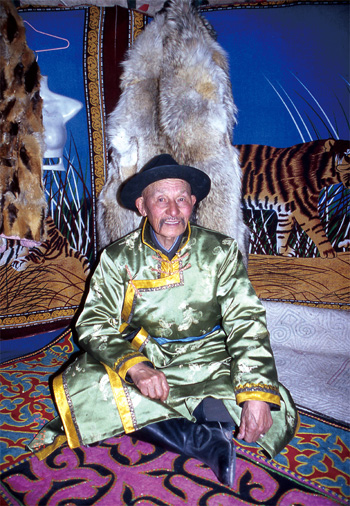Written by: Cheng Wanli
Posted on: October 24, 2012 |  | 中文
| 中文
The Mongolian Jianggar is famed as one of the three greatest epics of China, together with Tibetan Gesar and Kirghiz Manas. Scholars say that according to the names of places, topography and living settings depicted in the epic, it took form between the thirteenth and seventeenth centuries.
The epic is very popular among the Mongolians living in the southern and northern parts of the Tianshan Mountains. They are descendants of four grand Oirat tribes. Jianggar is also popular in western parts of Mongolia and in the region along the Volga River in Russia, which is also home to a population of Oriat Mongols (Kalmuk).
 Jianggar has been passed down orally for generations and exists in a variety of versions. Some say that the masterpiece has 80 chapters or even 100. However, most scholars hold that the earlier versions are about 70 chapters. With the passage of time, many valuable chapters were lost. At present, 27 chapters have been collected in the version of Jianggar published in the Mongolian language. Zhu Nai, a master singer who lives in Xinjiang Hoboksar Mongolian Autonomous County, collected and published a 25-chapter version of Jianggar. More new chapters will certainly come into print as research continues.
Jianggar has been passed down orally for generations and exists in a variety of versions. Some say that the masterpiece has 80 chapters or even 100. However, most scholars hold that the earlier versions are about 70 chapters. With the passage of time, many valuable chapters were lost. At present, 27 chapters have been collected in the version of Jianggar published in the Mongolian language. Zhu Nai, a master singer who lives in Xinjiang Hoboksar Mongolian Autonomous County, collected and published a 25-chapter version of Jianggar. More new chapters will certainly come into print as research continues.
Jianggar is the hero for whom the epic is named. It is said that his father established a Utopia known as Baomuba, a place where there was no orphan, no widow or widower, where people never went hungry, and where they were never older than eighteen years of age. When the crown of Baomuba passed to the third generation, the queen gave birth to a baby who was ensconced in a red ball. It was the boy Jianggar, who was so strong and powerful that as soon as he came into the world, he was able to speak and to kick a big hole in the old goat skin mattress he was lying on. His father was so pleased with the birth of his son that he began neglecting attention towards the defense of his kingdom. Manggusi, a monster, invaded the kingdom and Jianggar’s parents were killed when he was two years old, leaving him an orphan. To avenge his parents’ murder, Jianggar began to go out to battle at the age of three. When he was seven years old, he had established his fame and had become the King Khan of Baomuba. Despite being defeated several times in war, Manggusi did not relent in his invasions of Baomuba. Leading 35 generals and 6,012 warriors, Jianggar defeated Manggusi and kept Baomuba free from invaders’ occupation.
The epic Jiangger not only created the great image of Jiangger, but also created other eternal images, such as those of the all-knowing Alatan Qieji, an old hero Hunjier, a hero who always fought enemies by himself Yanming, the most handsome man in the world?and Queen Agai Dale, all of whom have been popular among Oirat Mongols for generations.
Jianggar is not only a cultural treasure but also a mirror in which the heroism, romanticism and idealism of Oriat Mongols are reflected. As a representative work of Oriat literature, the lyrics and melody of Jianggar have had great influence on Oriat Mongol folk literature and have been enjoyed by the Oirat Mongols for centuries.
You may also like: